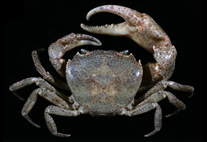Abstract
The generic placement of Parapsallus vitellinus (Scholtz) has remained confused with the species having been placed in the genera, Capsus Fabricius, 1803 (Scholtz, 1847); Psallus Fieber, 1858 (Fieber, 1861); and Plagiognathus Fieber, 1858 (Henry & wheeler, 1973; Schuh, 2001), in addition to Parapsallus. In the latest study of the taxon, Schuh (2001) treated this as belonging to Plagiognathus Fieber, because of similar structural affinity in the male genitalia. But in the present study, we observed the apex of endosoma is distinctly unequal, the elongated apical process remarkably curved (unlike the genus Plagiognathus), and the posterior wall of the female genitalia with a pair of chitinized membrane on either side are distinct and somewhat resemble with K–structures in Orthotylinae which are rare or not found in species of Plagiognathus. However, a few exceptional cases are reported in recent studies in the members of Phylinae (Weirauch, 2007; Schuh & Pedraza, 2010; Schuh & Weirauch, 2010). Moreover, the recent molecular-based phylogenetic analyses of Miridae indicated Parapsallus vitellinus as a separate clade not intermixing with the species of Plagiognathus (Jung & Lee, 2012). Therefore, differences manifested in morphological and genetic approaches suggest resurrection of Parapsallus Wagner with its only included species P. vitellinus. A simple diagnosis, re–description, and illustrations of male and female genital structures are provided.

